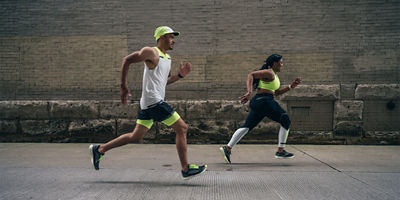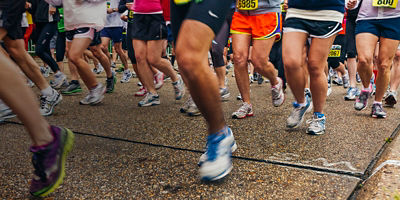
Yoga is good for body and soul. For outdoor athletes—skiers to cyclists, runners to backpackers—yoga helps our bodies by opening up tight muscles and evening out imbalances. It helps us to strengthen and work on balance, which benefits all sports. And it teaches us to breathe slowly and deeply—in fact, yogic breathing has been found to improve cardiorespiratory function. And yoga has also been tied to reducing inflammation in the body, while boosting immunity.
The mental benefits of yoga are just as compelling. Studies have shown the meditative aspects of yoga reduce stress, help relieve anxiety disorders, and even treat major depressive disorder. The impact yoga can have on body and mind, and the connection between the two, can help outdoor athletes feel grounded and centered in what may be an otherwise go-go-go life busy with workouts, work, family, adventure, and so on.
If you don’t have the time or resources to attend in-person yoga classes, or are trying to minimize your exposure to COVID-19, you’ll find plenty of yoga instruction in apps and online. The key to a healthy yoga practice at home is creating the right environment. Here’s how.
What You Need
To be clear, yoga has no required gear. You can do yoga in whatever you’re wearing and on any old rug or carpeted surface. However, to be the most comfortable, and therefore, to make you want to practice yoga at home, we suggest having a few key items:
Yoga Mat
Mostly made of PVC-free natural rubber, yoga mats provide a mildly grippy surface for you to practice poses without slipping (like you would on carpeted surfaces). They range in thickness from around 4.7mm to 8mm; the thinner the mat, the more control you may have during standing poses. The thicker the mat, the more cushy, which can be nice during poses that call for kneeling or resting on forearms. Having a yoga mat also gives you a dedicated space on which to practice, which can add motivation. Yoga mats can be rolled up and easily stored away in a closet or corner.
Alternative
You can use a large towel as your dedicated yoga space, but towels tend to annoyingly bunch up and can also cause slipping. Still, they’re better than nothing.
Yoga Block
Made of cork or foam, yoga blocks allow you to modify certain poses by offering support of various heights. For instance, if touching the mat isn’t within your comfort range during a pose like Extended Triangle, resting your hand on your block instead of on your mat can keep you in better alignment. Blocks can be used in a variety of heights—either on their tall sides, short sides, or lying flat—to provide customizable support for various poses.
Alternative
A water bottle works in providing support for some poses, but of course has only one size. A shoe box can work, but will collapse under too much pressure.























